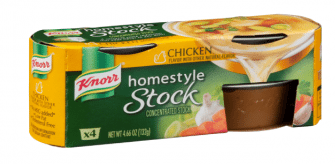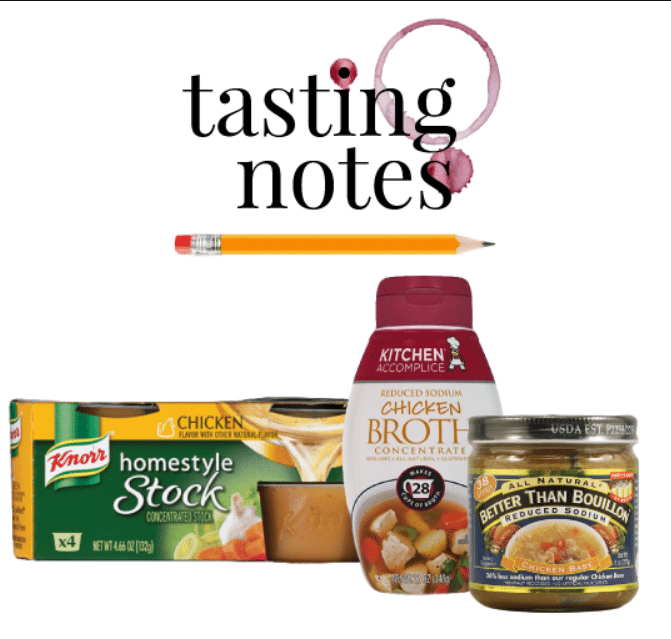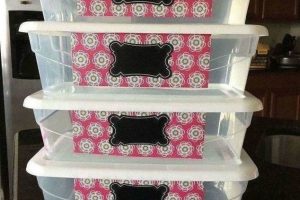When cooking with chicken broth, nothing beats homemade. Nothing. But it’s not always convenient to make and keep on hand. That’s why so many of us rely on the commercially produced variety. Yes it’s bland. Yes it lacks the depth of flavor of homemade, but it’s always there. It’s convenient, easy to store, and most of the time it does the trick.
Perhaps the bigger problem of store-bought broth is package size. In variably, a container holds far more broth than most recipes require. Certainly the leftover can be stored in the fridge, but if you don’t use it up in a week’s time, you’ll probably end up throwing it out.
Recently, broth concentrates have become increasingly popular with home cooks, primarily because they fix the inherent problems of traditional canned or boxed broth. Concentrate is essentially stock that is reduced down into an intensely flavored paste, gel or thick liquid. Since you control how much or how little water gets added, you can create a more flavorful broth, and you need only make as much as a recipe calls for each time you use them. They last for months, even after they’ve been opened. So there’s virtually no waste.
These concentrates are similar to bouillon cubes, granules or powders, but because they are never fully dehydrated, they have a more natural flavor and often have less added salt. Interestingly, most canned or boxed chicken broths are actually made from reconstituted concentrate.
We wanted to try some of these concentrates to see if they are a viable alternative to traditional store-bought broths. Since the most commonly used broth is chicken, we decided to start there and forego beef and vegetable broths for a later time. We were able to find three brands in the Washington, DC area–Knorr, Kitchen Accomplice, and Better Than Bouillon. To help us control the amount of salt when cooking with these products, we opted for reduced sodium formulas when available.
We tasted each broth in its fully reconstituted state and used them to make chicken soup, as a base for rice, and in several pan sauce recipes. Smell and color varied widely among these brands. Only one actually smelled like chicken broth. One had an odd musky oder, which was not appealing at all. Color ranged from pale yellow to a deep golden. We noted the primary ingredients of each product, and one brand contained no real chicken, just chicken powder.
It should come as no surprise that homemade chicken broth is still superior, especially in soups, but we did find we prefer these concentrated options to canned or boxed chicken broth for both their convenience and because we could regulate the strength of the broth.
Knorr Chicken Homestyle Stock

First 3 Ingredients: water, salt, palm oil
Concentrate/Water Ratio: 1tsp/1cup
Servings per Container: 14
Sodium per Tsp of Concentrate: 750mg
Color: Pale golden
Smell: Did not smell like homemade chicken broth at all
Taste: Very mellow flavor, could not discern any chicken flavor
Overall Rating: Acceptable substitute to boxed or canned chicken broth. Very mild flavor, but contains no real chicken, just reconstituted chicken powder. Still, it didn’t interfere with other ingredients, but it didn’t add any depth either. Good choice for soups. Each individual package make about 3½ cups (825 ml) of soup.
Source : kitchenjournals.com









